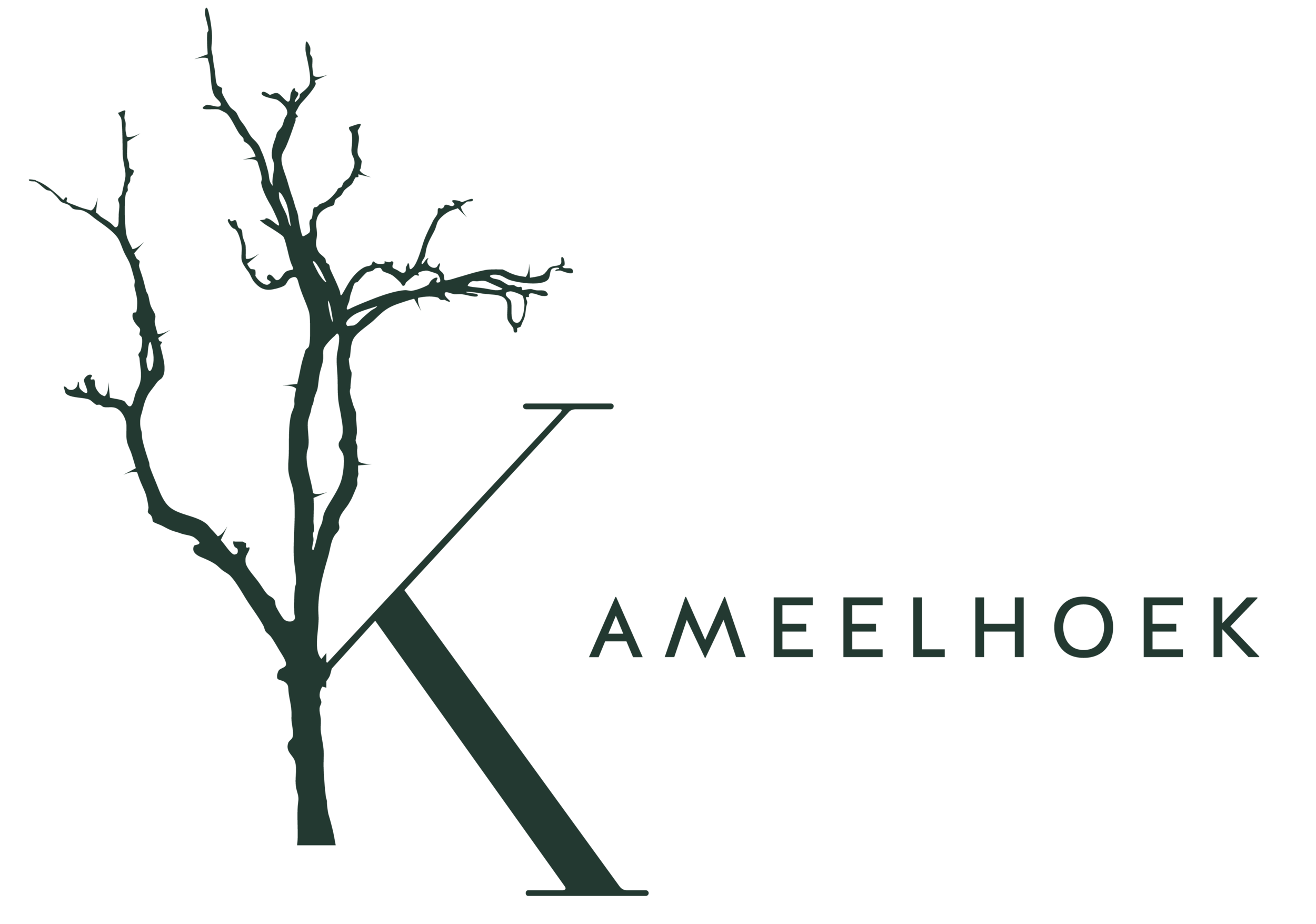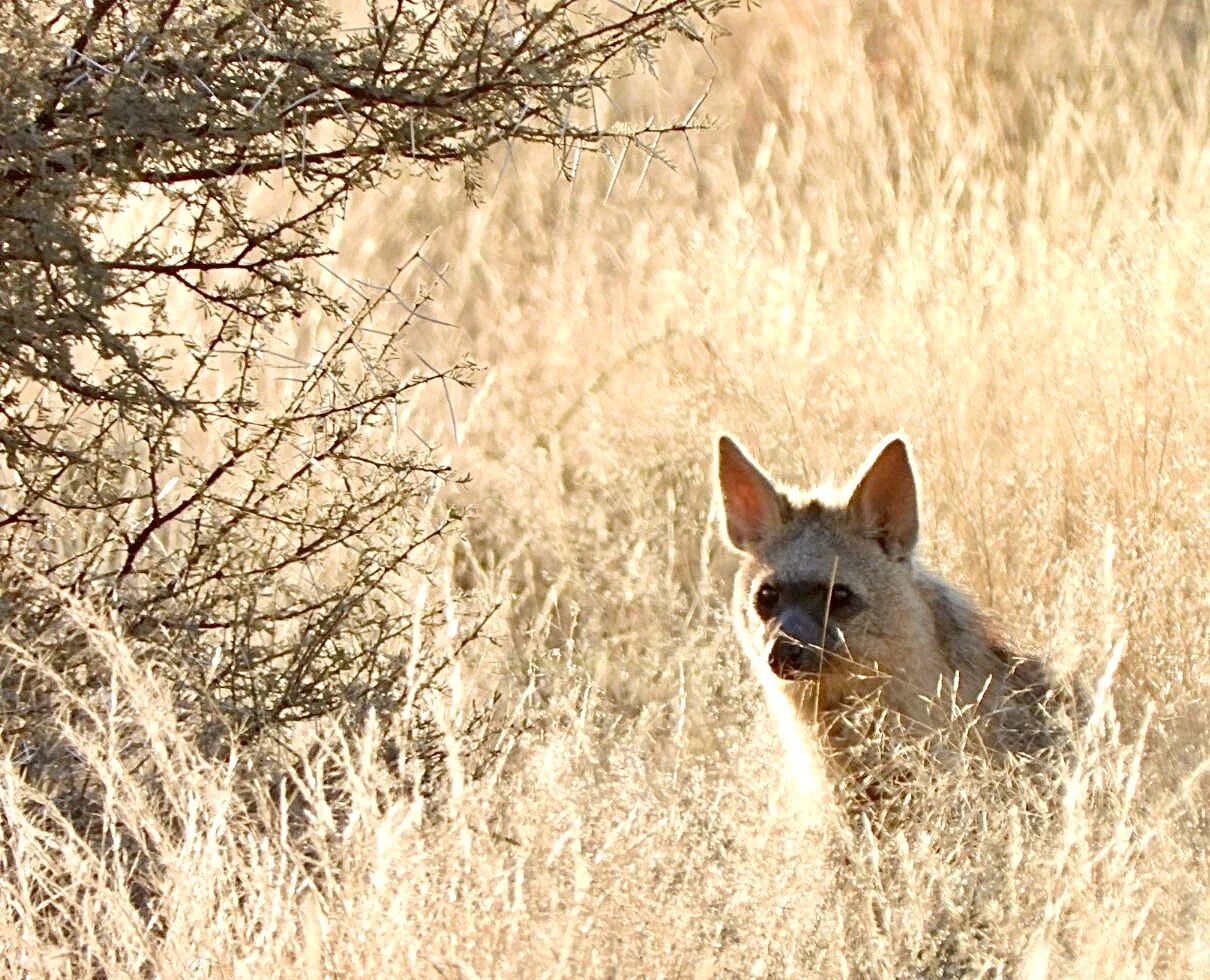Aardwolf
Image Credit · Morné Muller
Family: Hyaenidae; Genus: Proteles; species: cristata
Sunset on Kameelhoek is probably the most exciting and beautiful time of day where animal and plant life come alive. Signified by an intense golden glow of the grassy landscape and the sudden, but discreet appearance of somewhat unfamiliar faces. A time of day known as “golden hour” where diurnal (1) becomes nocturnal (2) as the sun slowly disappears over the horizon. The unexpected onset of a cool breeze together with stretched out shadows of trees and termite mounds prepare the earths surface for a good night’s rest. This is when many nocturnal animals appear from their subterranean dwellings, carefully making their way along predetermined routes.
These subterranean dwellings, better known as “burrows”, are often shared amongst several species of animal throughout different times of the day. Aardvark (Orycteropus afer), porcupine (Hystrix cristata), Small-spotted genet (Genetta genetta) and Black-backed jackal (Canis mesomelas) are only a few examples to name the least, with their presence usually only visible through signs in the sand (tracks and markings).
A casual game drive during “golden hour” may present an opportunity to spot even the shyest of species, especially whilst driving through central parts of Kameelhoek. It is in this area where one might catch a glimpse of an Aardwolf, foraging amongst scattered termite mounds. Unlike its larger cousins in the Hyena family (Hyaenidae), the Aardwolf feeds almost exclusively on harvester termites (Trinervitermes species) ensuring a relatively effortless opportunity to obtain a protein-rich meal. Although the smallest of the hyena species, the Aardwolf is certainly the most specialised. Its distinct diet and ability to avoid conflict allows it to survive in the most difficult conditions. The Aardwolf makes up for its dainty appearance through an impressive threat display. It is a humble character with a big heart and an awesome site to see in the wild.
Diurnal – animal activity during daytime
Nocturnal – animal activity during night-time

